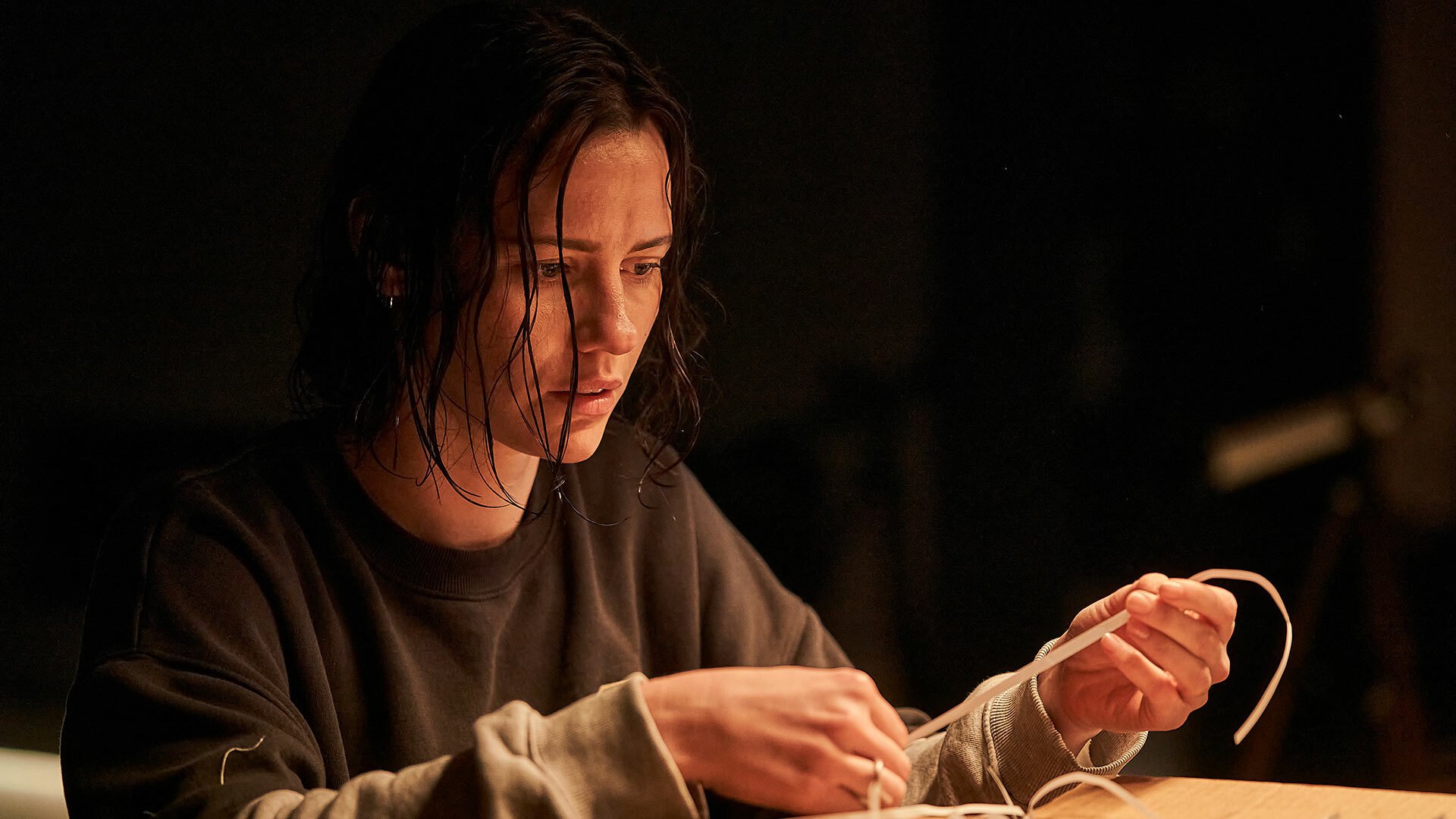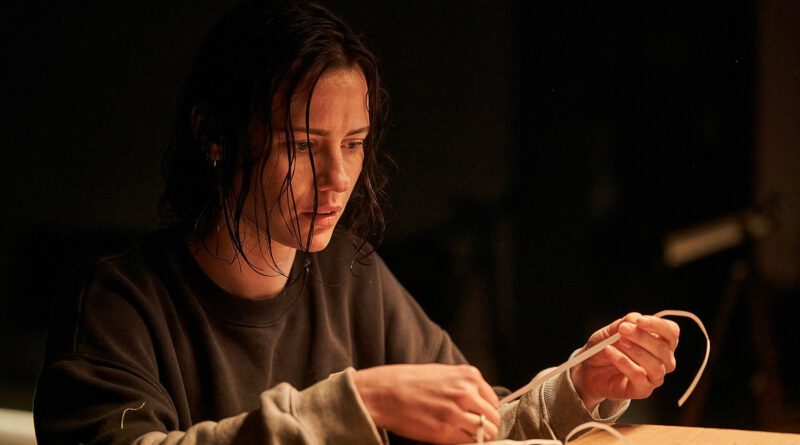‘Monolith’s twisty ending, explained

Despite its teeny tiny budget, Lucy Campbell and Matt Vesely’s sci-fi mystery Monolith is a film of big questions.
Following a podcaster (Lily Sullivan) on the cusp of a seemingly global mystery, the movie brushes up against the edges of possible government conspiracy and alien contact without ever being explicit about either one.
So it is a film about extraterrestrial objects that are spreading a disease among the human population? Or something else? Let’s dive in.
What’s Monolith about?
After being publicly shamed for writing a story about someone without fully backing up her sources, an anxious journalist retreats to her wealthy parents’ Adelaide Hills house in the countryside to work on a new podcast. Her career is on the line and things are looking grim, but then a new lead lands in her inbox — a tip-off about a woman who suddenly came into possession of a mysterious black brick. The journalist starts digging and quickly discovers that there are more of these bricks, with the recipients all being connected by illness and strange visions. Soon, she finds out the bricks contain symbols that aren’t from any known language — and that she herself may already be more involved in the story than she first realised.
What happens at the end of Monolith?
The first person the journalist interviews after receiving her tip-off is a woman called Floramae (voiced by Ling Cooper Tang). Floramae’s brick story started when her daughter, Paula (voiced by Ansuya Nathan), supposedly vandalised the furniture of the wealthy family Floramae worked for many years ago. The family (who had a daughter of their own) fired Floramae and brought legal action against her, and they ultimately took the black brick as payment, later selling it to an art collector.
The journalist eventually realises that it was her own family who stole the black brick from Floramae, and it’s implied that she herself vandalised the furniture which got Floramae’s daughter in trouble. After this realisation, and her decision not to do anything about it (she deletes the interview in which her father confirms what happened), the journalist coughs up one of the black bricks. She then smashes it with a hammer, only for the pieces to morph together into a doppelgänger of herself. She has a final confrontation with the doppelgänger and one of the versions of herself is killed. Yep, it’s a lot.

What are the black bricks in Monolith?
The answer to this question lies in another question, which is really at the heart of the film: Is this a story about aliens, mental illness, or both? The story deliberately treads an ambiguous line, particularly as we watch events unfold from the perspective of someone who is under severe mental stress.
On the one hand, it seems as though the black bricks are real. The journalist speaks to multiple people across the globe who have similar experiences with the prisms, she receives images of them, and she examines three dimensional scans of them which she sends to her scientist brother to corroborate. If there’s a scam going on here, it’s an impossibly thorough one. Given that the symbols inside the bricks aren’t found in any human language, the implication is that these objects could be extraterrestrial in origin (a theory that could be supported by the shot of a giant black brick hovering in the sky above the journalist’s house). Perhaps the bricks are being used by an alien force to spread a weird sickness throughout the population? Or maybe it’s all some kind of experiment?
On the other hand, it would be just as easy to argue the black bricks are a metaphor for mental illness. Every person in the story that’s encountered one has some kind of traumatic tale associated with the brick coming into their life — Floramae has the vandalism accusation and her subsequent firing; art collector Klaus (Terence Crawford) has a story of his brother’s death; and the journalist herself has her own repressed childhood memories, along with the decision to keep them buried. Could the black brick be symbolic of her rapidly worsening mental health towards the film’s conclusion?

What happens to the journalist at the end of Monolith?
Once again, this question goes back to the aliens vs. mental illness debate. One reading is that the doppelgänger that’s born from the brick could be an actual alien — a physical manifestation of whatever extraterrestrial race is sending out these black bricks. Maybe the brick is some kind of vessel that’s able to transport an alien within it, or maybe it’s like a seed that grows inside a person, scraping their memories and DNA until it’s born into a literal double of them.
Or, on the other hand, what if this is all in the journalist’s spiralling mind? What if the doppelgänger marks her descent into psychosis, and her fight with it is actually an extended metaphor for her own internal struggles?
Because Monolith treads this line so carefully, it’s impossible to be certain about the journalist’s fate. Either she’s been replaced by something other at the movie’s conclusion, or she’s suffered a complete mental break from reality. Like the film as a whole, the ending is left up to our own interpretation.
How to watch: Monolith is in theaters from Feb 16.

